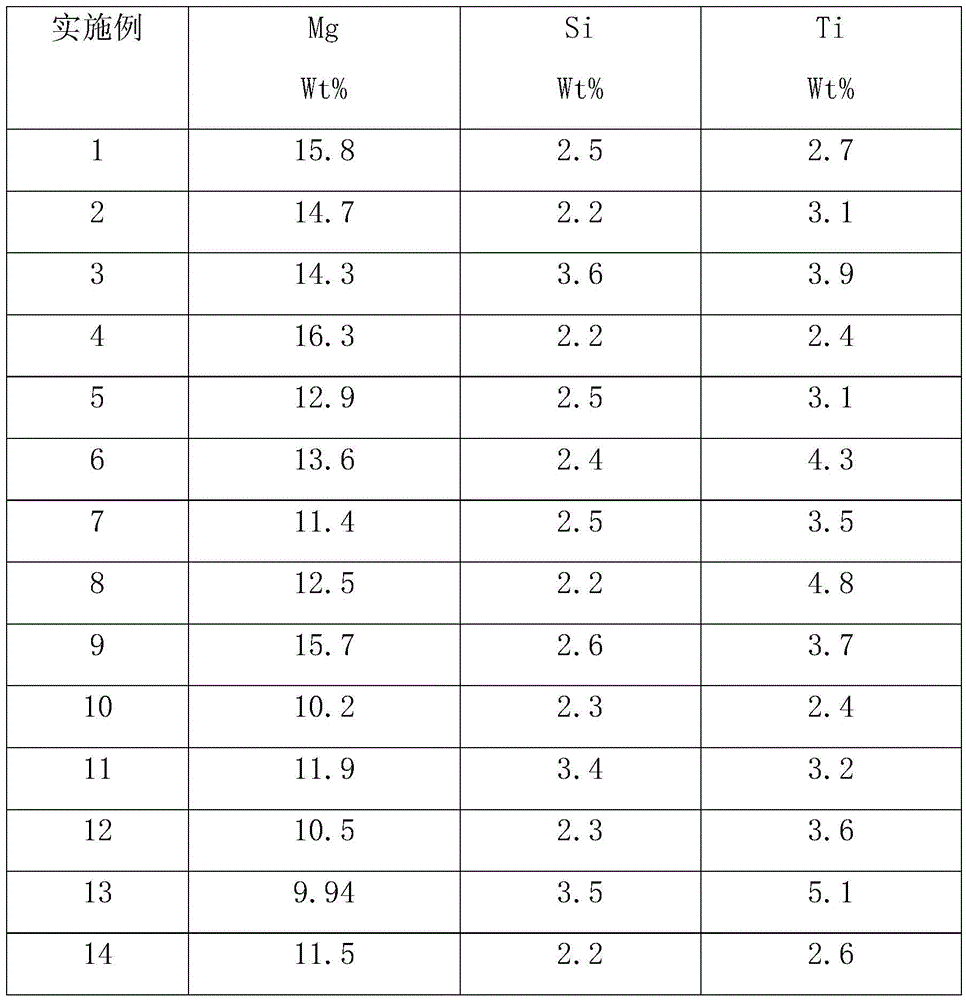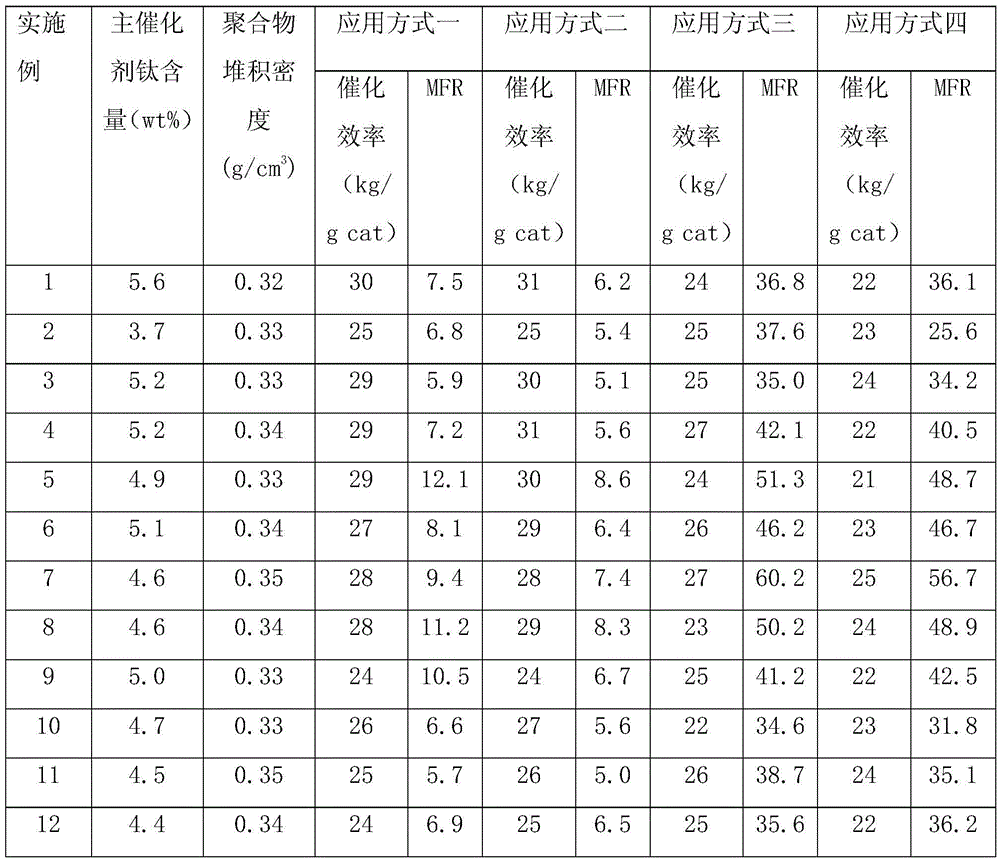Preparation method and application of polyolefin-coated Ziegler-Natta catalyst
A polyolefin and catalyst technology, which is applied in the preparation of catalysts and in the field of catalysts, can solve the problems of easy adhesion on the container wall and low catalyst activity.
- Summary
- Abstract
- Description
- Claims
- Application Information
AI Technical Summary
Problems solved by technology
Method used
Image
Examples
Embodiment 1
[0042] Add 1g of magnesium dichloride, 20ml of n-decane, 6.5ml of isooctyl alcohol, 0.1ml of ethanol into the reactor fully replaced by nitrogen, stir and heat up to 110°C, react for 2h, and the solid dissolves completely to form a uniform solution . Cool down to 50°C, add 0.5ml of tetraethoxysilane and 0.3g of sorbic acid in sequence, and react for 2h. The system was lowered to -15°C, 25ml of titanium tetrachloride was added dropwise, reacted for 1 hour, and then heated to 100°C for 2 hours. Stop stirring, let stand, separate layers, filter, wash with hexane four times (30 ml each time); stir at 0°C, add 6 ml (2M) of triethylaluminum, and react for 10 min; fill with ethylene (0.02 MPa), And react at 0°C for 10 minutes. Stop stirring, let stand, separate layers, filter, wash with hexane four times (30 milliliters each), and dry in vacuum at 70° C. for 2 hours to obtain a spherical powdery solid procatalyst with good fluidity and uniform particle size distribution.
Embodiment 2
[0044] In the reactor fully replaced by nitrogen, add 1g of magnesium dichloride, add 20ml of n-decane, add 6.5ml of isooctyl alcohol, stir and heat up to 100°C, react for 3h, and the solid is completely dissolved to form a uniform solution. Cool down to 60°C, add 0.3ml of tetraethoxysilane and 0.3g of citric acid in sequence, and react for 1.5h. The system was lowered to -10°C, 30ml of titanium tetrachloride was added dropwise, reacted for 2h, and then heated to 100°C for 2h. Stop stirring, let stand, separate layers, filter, wash with hexane four times (30 ml each time); at -5°C, stir, add 3 ml of triethylaluminum (2M), react for 5 min; fill with ethylene (0.01 MPa) , and reacted at -5°C for 10 min. Stop stirring, let stand, separate layers, filter, wash with hexane four times (30 milliliters each time), and dry in vacuum at 60° C. for 3 hours to obtain a spherical powdery solid procatalyst with good fluidity and uniform particle size distribution.
Embodiment 3
[0046] Add 1g of magnesium dichloride, 20ml of n-decane, and 10ml of isooctyl alcohol into the reactor fully replaced by nitrogen, stir and heat up to 120°C, react for 2h, and the solid dissolves completely to form a uniform solution. Cool down to 40°C, add 0.25ml of tetraethoxysilane and 0.3g of citric acid in sequence, and react for 2h. The system was lowered to 0°C, 30ml of titanium tetrachloride was added dropwise, reacted for 2h, and then heated to 90°C for 2h. Stop stirring, let stand, separate layers, filter, wash with hexane four times (30ml each time); at -10°C, stir, add 1ml of triethylaluminum (2M), react for 15min; fill with ethylene (0.05MPa) , and reacted at 10°C for 5min. Stop stirring, let stand, separate layers, filter, wash with hexane four times (30 milliliters each time), and dry in vacuum at 70° C. for 3 hours to obtain a spherical powdery solid procatalyst with good fluidity and uniform particle size distribution.
PUM
| Property | Measurement | Unit |
|---|---|---|
| melt flow index | aaaaa | aaaaa |
Abstract
Description
Claims
Application Information
 Login to View More
Login to View More - R&D
- Intellectual Property
- Life Sciences
- Materials
- Tech Scout
- Unparalleled Data Quality
- Higher Quality Content
- 60% Fewer Hallucinations
Browse by: Latest US Patents, China's latest patents, Technical Efficacy Thesaurus, Application Domain, Technology Topic, Popular Technical Reports.
© 2025 PatSnap. All rights reserved.Legal|Privacy policy|Modern Slavery Act Transparency Statement|Sitemap|About US| Contact US: help@patsnap.com



